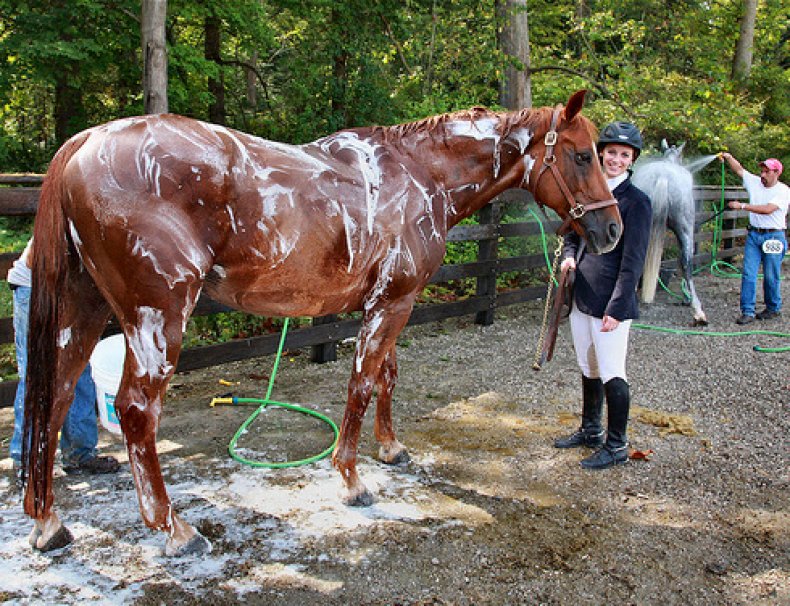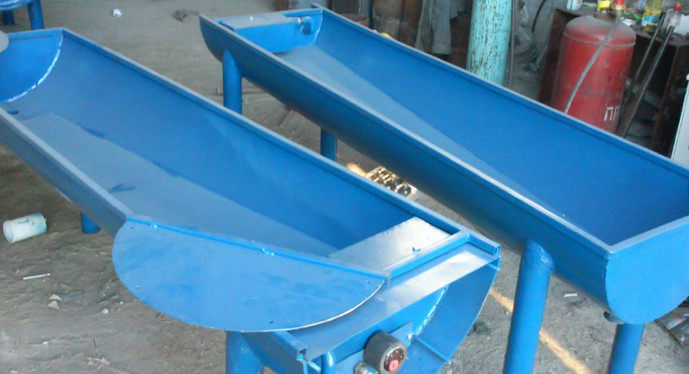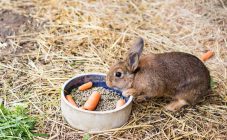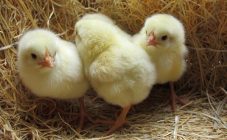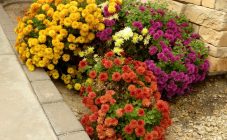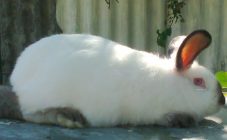Content:
Before starting a horse, you must carefully study the rules of maintenance and care. The health and ability of the horse to work depends on the competent observance of all requirements. For equestrian sports enthusiasts, grooming activities will allow you to establish contact with the animal. How to keep a horse, this article will help you figure it out.
How to properly maintain a horse
Keeping the horse in a warm, dry farm environment. It is possible to keep a horse in a private house both in a stable (as a rule, for one or a maximum of two horses), and in a stable, divided into compartments limited from each other for many individuals.
The stables are divided into stalls and stalls. In the stables, horses are fed, cleaned and temporarily resting. Denniks are called places of residence and care for horses. The size of the horse's resting area should be such that the individual can comfortably fit while lying down and stretch his legs. More free spaces should be provided for mares with foals.
Materials for the walls of the stalls must be durable, preferably woodworking products. Nets should be installed to allow eye contact between horses and to avoid stagnant air.
The doors to the stall should be at least 1.2 m wide; it is more convenient to use swing or sliding mechanisms. In this case, the opening of the door should occur outward.
At home, it is better to use stone or paving stones as flooring for horses. Installation of drainage ditches will reduce the time for cleaning the premises. To avoid injury to the horses' hooves, it is better to lay a rubber mat on a hard floor surface, covering it with a litter.
Straw, wood pellets or shavings are well suited as bedding material.
Stable ceilings should be at least 2.5 m high, allowing animals to raise their heads freely. Protrusions, protruding sharp corners are unacceptable, they can lead to injury to horses.
It is better to use natural light for lighting. When wiring electric lamps, care should be taken to ensure the safety of wires, switches and horse lamps.
Stall cleaning
Before cleaning the stall, the horse should be taken out of it by holding the horse walker. The feeder, drinker and toys should be removed. Use a shovel or pitchfork to collect damp bedding and excrement in a cart. Clean the corners of the room thoroughly. Clean up dry debris. Safe floor disinfectants can be used. After complete drying, the floors should be evenly covered with clean sawdust. Reinstall the feeder and drinker, replacing the water and adding fresh feed. Clean and replace toys.
How to feed a horse
The horse's diet is based on grass. However, vegetation is highly influenced by changing climatic conditions, which makes it less useful. Therefore, it is necessary to add other feed such as hay to the food.
Dried herbs and plants are needed in the amount of 15 kg per day per individual. You can distinguish well-prepared hay by its pleasant smell, bright green color. No heat should come from the haystack. A yellow or brown color indicates a decrease in nutritional value.
Proper storage of hay requires a dry, well-ventilated area. In such conditions, the shelf life can be no more than 2 years.
Care should be taken when feeding oats and corn. With an excess of them in the diet, obesity, stomach ulcers and dental problems develop.
You can use industrial concentrates containing grain, bran and mineral additives.
The installation of salt blocks is mandatory. They differ in description:
- white - table salt;
- blue - salts of cobalt and iodine;
- brown - contain mineral components;
- red - iodine derivatives.
Drinking regime
Caring for horses involves, in addition to feeding, adherence to the drinking regime. How much water to give depends on the individual needs of the individuals. They differ depending on the state of health, size, food supply (dry food requires more water), loads and the month of the year.
The water must be clean, ideally running. The use of dirty water threatens the development of bacterial or viral infections or parasite infestation.
The use of automatic drinkers can save the owner time and effort. However, you should make sure that the buckets are securely fastened.
Typically, the drinking regimen is 2 times a day: morning and evening. However, it should be remembered that the horse must be provided with water after training or competition. Drinking should be done no earlier than 1 hour after loading.
Hygiene procedures
How to take care of a horse? The mane and tail should be brushed daily. Plastic combs and combs work best for this. Combing the tail, you need to stand on the side and clean the hair from debris with smooth movements from top to bottom.
The eyes and nostrils should be wiped with a damp sponge upon awakening. A fluffy brush works well for wool. If heavily soiled, use a horse scrubber.
Hair care should be carried out according to a short diagram:
- start from the head;
- go down the shoulders;
- clear the back;
- wipe the limbs.
All treatments are performed alternately on each side using horse brushes. You can use inexpensive hair detangling products.
After cleaning, polish the horse with a dampened cloth or chamois leather.
Extra hair should be trimmed from horse legs. After stress, remove the dirt with water from the hose. When washing your horse, the water should be warm. No special skills are required.
Hoof care
Shoeing is an important step in hoof care. This procedure should only be carried out by a trained blacksmith. Re-forging of old horseshoes is carried out after 6 weeks to avoid narrowing of the hoof, slowing its growth and weakening the legs.
How to care for horses' hooves? It is necessary to clean the hooves in the following sequence:
- running your hand along the limb, you should bend it just above the knee;
- while holding the hoof, use a hook or hand to clean out dirt and small stones;
- inspect for injuries, cracks starting to develop and other problems;
- inspect for hoof mite infestation for horses.
The procedure is carried out alternately with each hoof. If you have any problems, you should immediately contact a specialist.
Necessary tools for care
How to take proper care of horses? This requires a basic set of tools:
- curry comb - to remove dirt from the hair, it is necessary to stimulate the skin's natural hydration;
- brush with stiff bristles;
- brush with soft bristles;
- comb with sparse teeth;
- hoof hook;
- scraper to remove excess moisture;
- towel, suede or cloth for drying wool;
- scissors.
Such kits are sold ready-made, containing everything you need to care for a horse, or you can independently assemble a suitable one for yourself.
Compliance with regulated grooming will keep your horses healthy and look more attractive. It is also important to attend special courses for beginners or invite care professionals to monitor independent actions.
